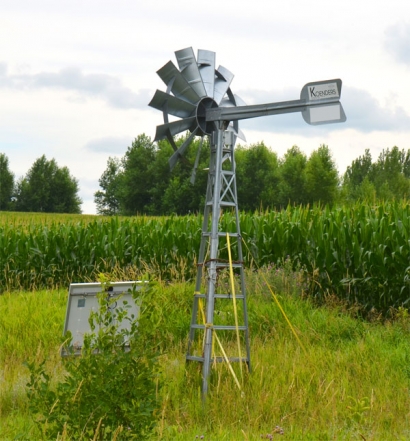
Eco-consumer rates recently increased, altering production and manufacturing practices. The current customer market values sustainable goods and services and pays more for them than ecologically harmful products.
Generation Z consumers are 62% more likely to purchase eco-friendly goods over their less expensive counterparts. Over half of millennials also follow the consumption pattern. Aquaculture companies can increase their sales and profitability by adopting renewable energy devices.
Various environmental researchers claim farm-raised fish are more sustainable than wild-caught. Unlike conventional fishing practices, aquaculture uses less greenhouse gas-emitting machinery. Limited boat usage reduces the industry's contribution to high transportation emissions, which consume 29% of the national pollution rate.
Unfortunately, boating is one of many pollution-generating features in the industry. Aquaculture increases water contamination and the spread of marine species diseases. Renewable devices can promote sustainable fish growth and decrease environmental degradation.
The majority of aquaculture's energy consumption derives from feed production. Processing and transportation account for a smaller portion of power-generated emissions. When fueled with clean energy, the industry increases its sustainability and savings.
Environmental scientists and engineers developed a floatovoltic solar panel that protects water from adverse environmental impacts. New Jersey installed one system over a town water supply. The panels preserve the store, protecting it from algal blooms and evaporation.
Floatovoltaic panels can shade an aquacultural region, preventing an increase in water temperatures. Rising water temperatures are detrimental to aquatic stability. They cause habitat alteration and endanger marine species.
Additionally, high ocean temperatures spread diseases among fish and shellfish. Aquaculture companies can protect their fish from environmental degradation by shading their aquatic habitat with solar panels.
Using the open water to harvest solar energy also increases the renewable power supply. Limited open fields and sun-exposed areas reduce our national clean energy development. We can develop a national renewable energy grid by increasing our access to large quantities of solar power.
Aquaculture companies can sell excess power to the state, generating a passive income. They can also decrease their utility costs when utilizing solar energy. Fossil fuel generated electricity costs up to 17 cents per kilowatt-hour, and solar energy is between 3 and 6 cents.
Over time, a company can significantly increase its savings using renewable energy sources. They can also increase the sustainability of their business, raising their customer appeal.
Pond aeration is vital to farm fish production. Adequate oxygen levels reduce stress in marine species and increase growth rates. It also reduces toxic waste production at the base of a water source.
Professionals developed a wind-powered aeration system using Bal-Cam technology. Some devices can infuse ponds with 4.6 cubic feet per minute of oxygen. In high wind regions, the renewable device can significantly decrease greenhouse gas emissions.
Other fisheries access offshore wind power, fueling their feed production. They can place wind turbines miles away from their aquacultural region, maximizing energy production. Renewable energy storage advancements allow farmers to attain consistent wind power throughout the day.
Though aquaculture relies on large quantities of electricity, renewable energy sources enhance the industry's sustainability. We can significantly reduce national greenhouse gas emissions and water pollution when using solar and wind power. Fortunately, President Biden's financial support makes the sustainable transition possible.
In America, we can vote with our dollars. The consumer sets the market standard, and we hold the power to change fisheries' environmental impact. When purchasing seafood, you can look out for eco-labels that signify ecological conservation.
The Aquaculture Stewardship Council label guarantees the eco-conscious production of farm-raised fish. Additionally, the Best Aquaculture Practices label signifies biodiversity protecting production. You can increase the sustainability of your diet and shrink your carbon footprint by researching products before purchasing them.

